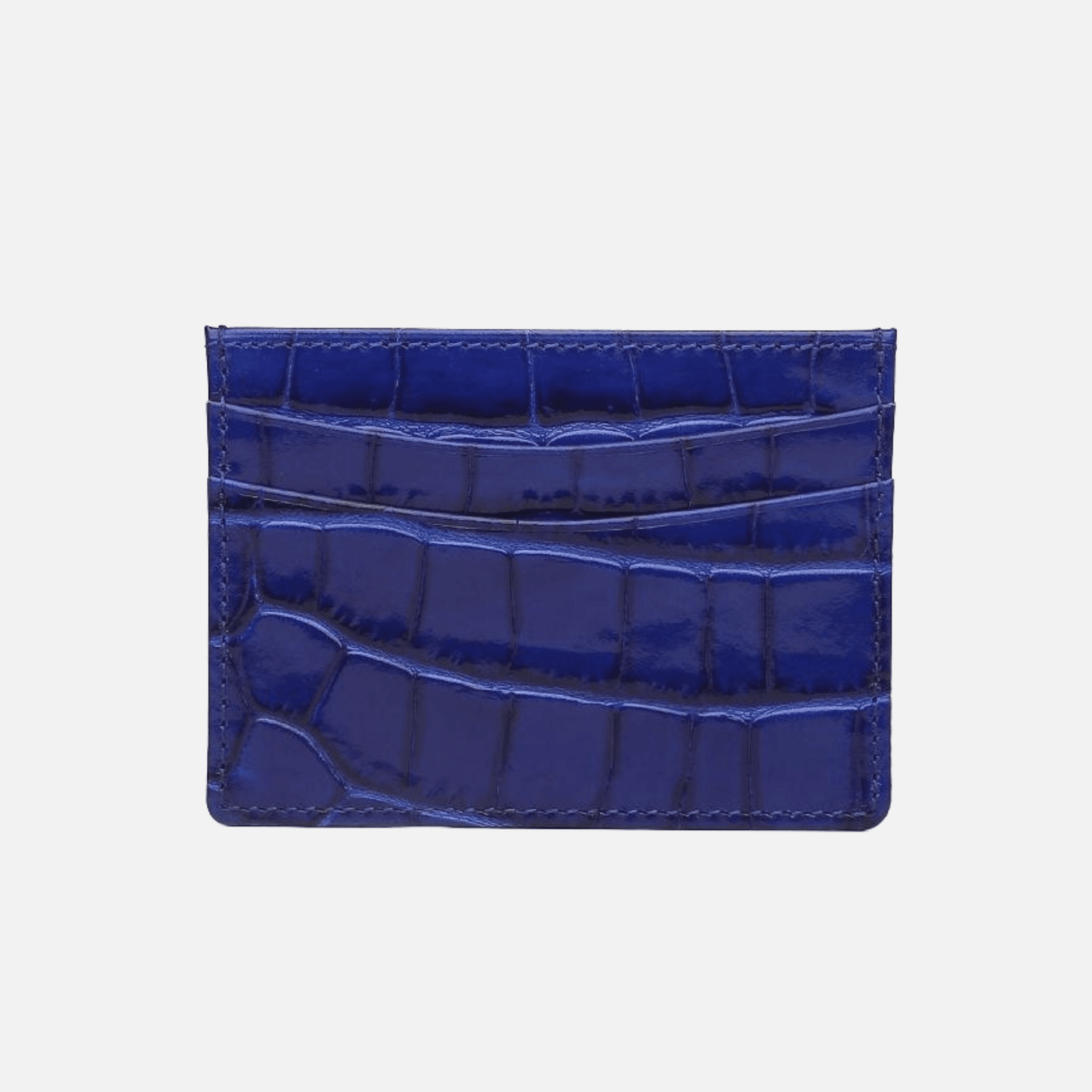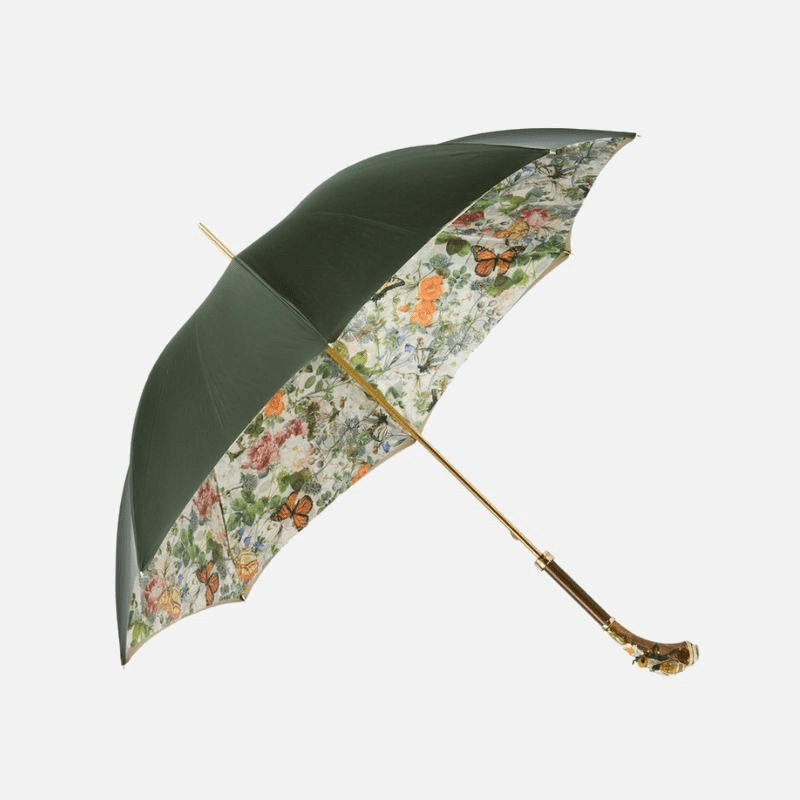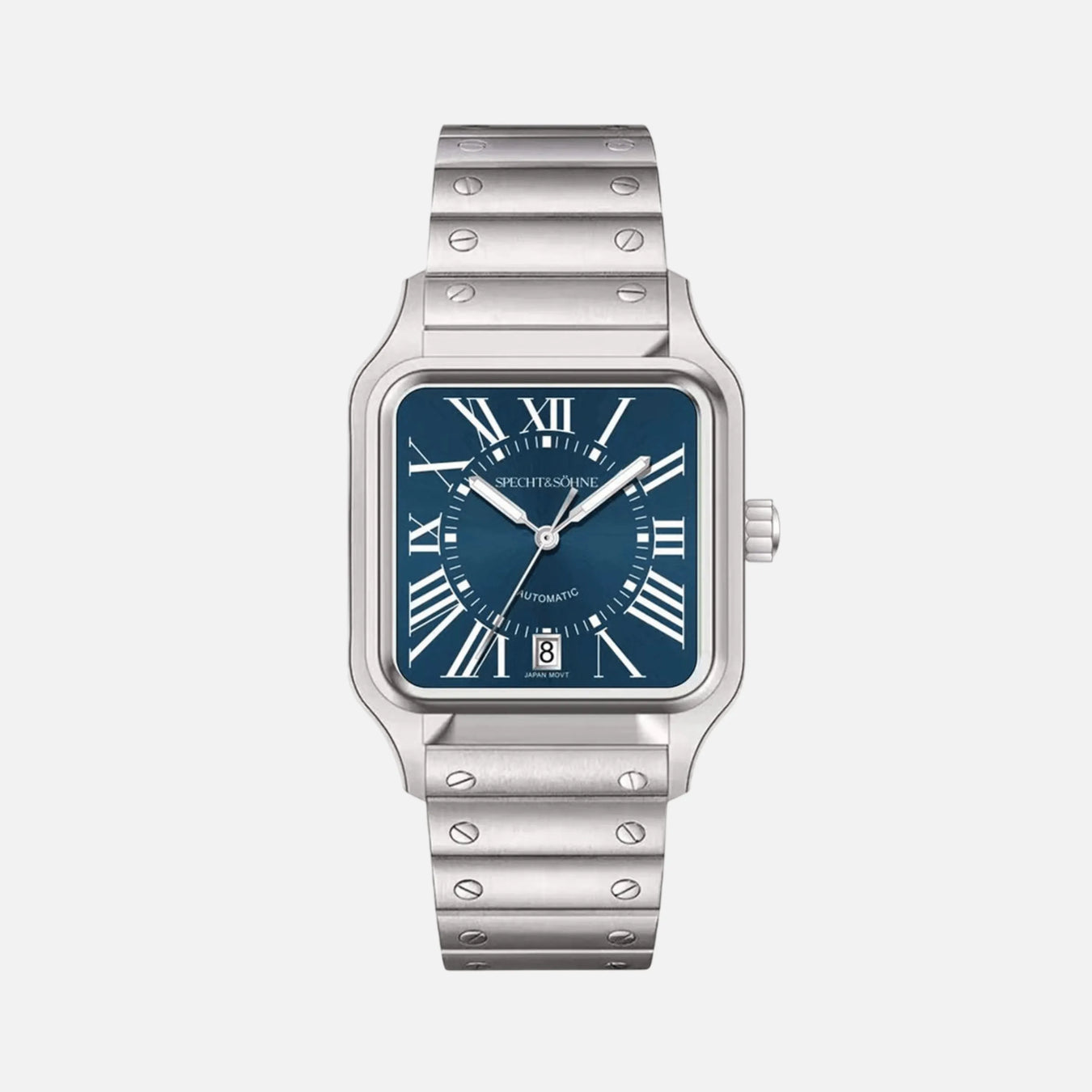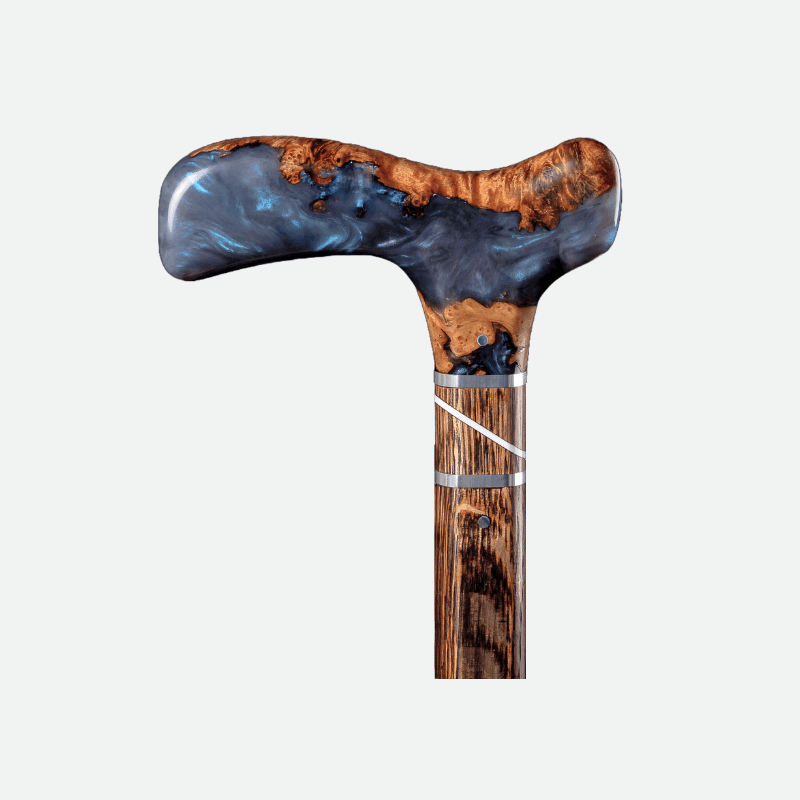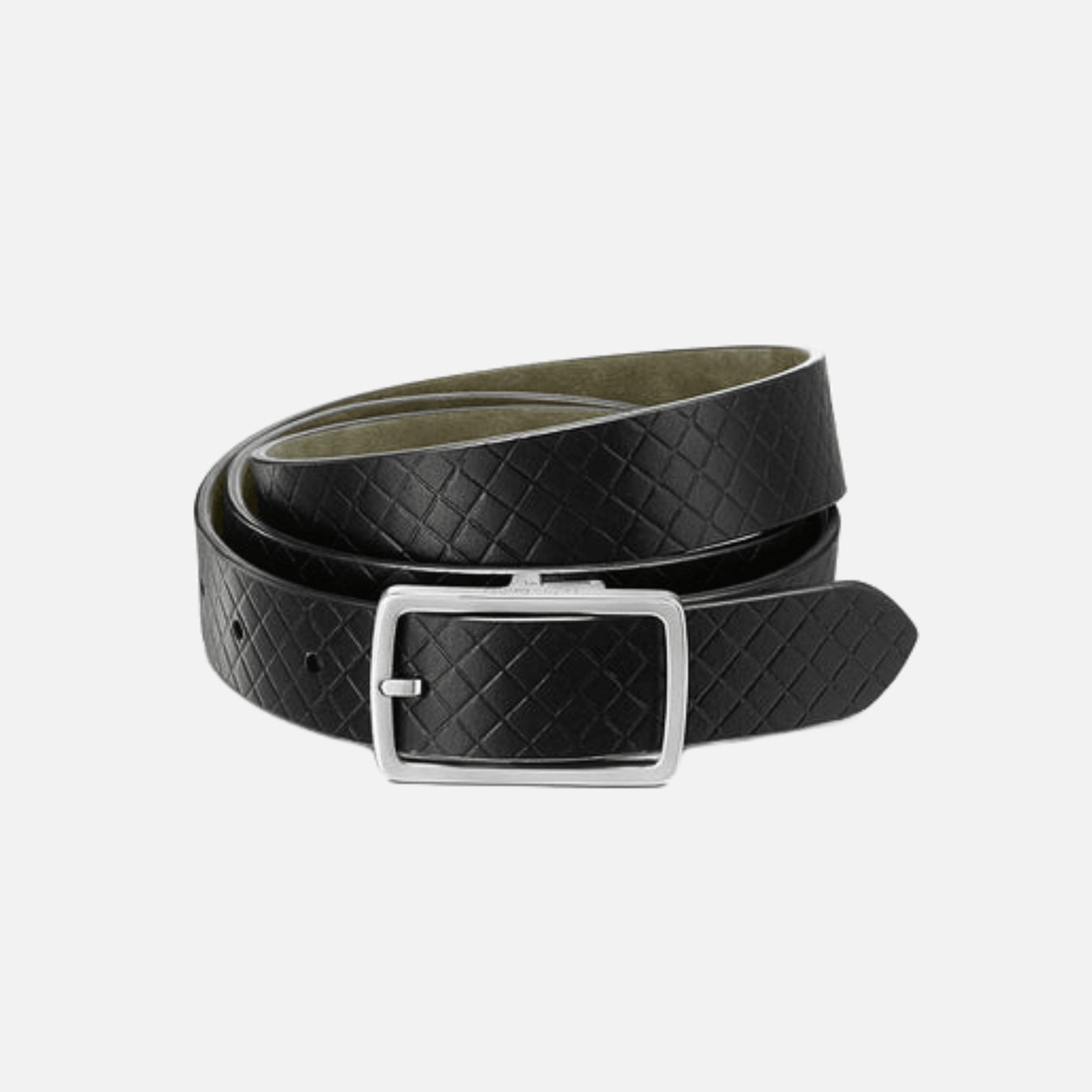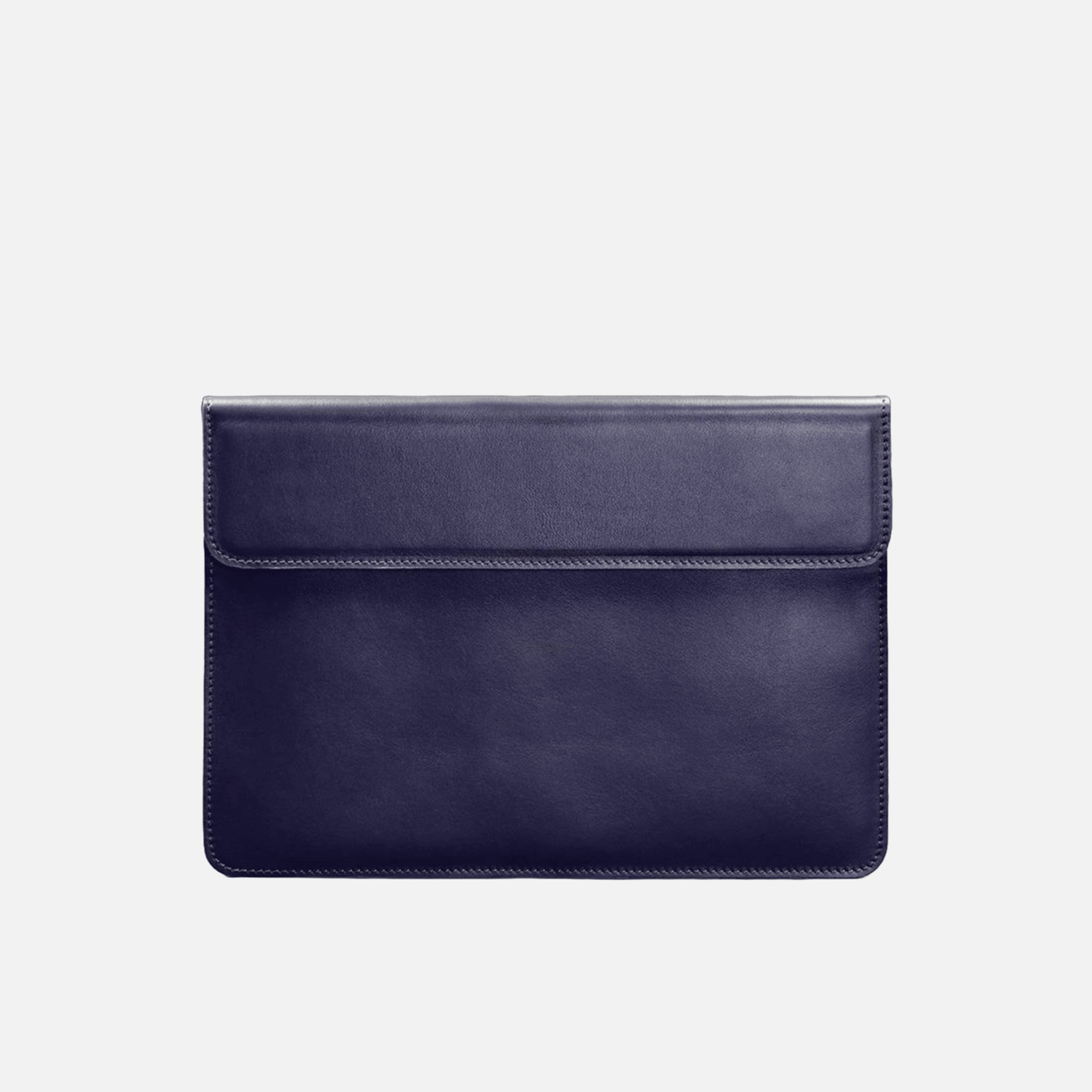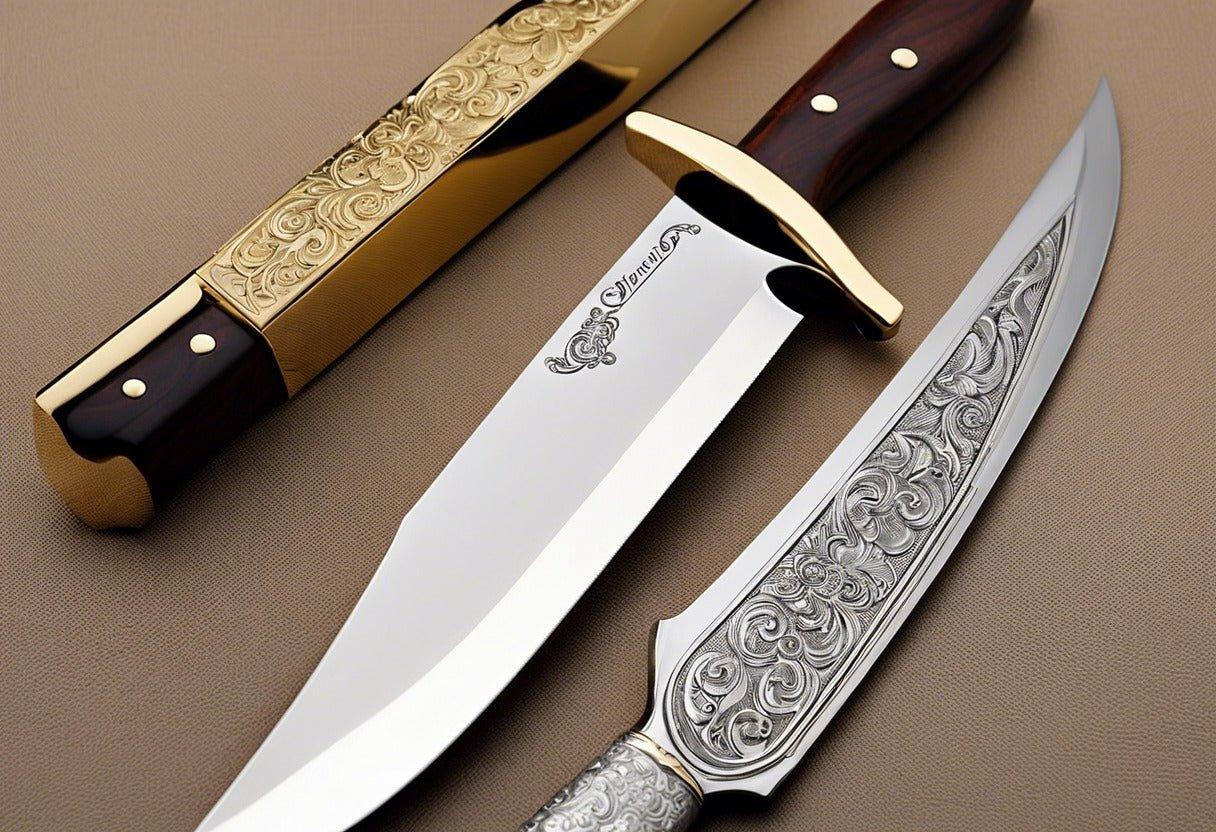
The Art of Gifting: Selecting the Ideal Modern Designer Knife
Introduction to the Art of Gifting and the Significance of a Designer Knife

Gifting is an art form that requires thoughtfulness, an understanding of the recipient’s tastes, and a touch of sophistication. It is a way to convey respect, appreciation, or affection through a tangible token. In this intricate dance of selecting the perfect gift, a designer knife emerges as a symbol of refined taste and functionality. From handmade craftsmanship to the latest trends in design and aesthetics, a modern designer knife presents itself as an epitome of utility blended with luxury.
A designer knife is not merely a cutting tool but a piece of art that has been meticulously fashioned, often made to order, to stand out from ordinary utensils. Whether it’s for a professional chef, an enthusiastic cook, or an outdoorsman, a designer knife resonates with the connoisseurship of the giver and the interests of the receiver. From classic to contemporary, the trends in designer knife aesthetics reflect a range of styles suited for any discerning individual’s collection.
Elevating everyday objects to the realm of extraordinary, the gifting of a designer knife transcends the ordinary, making a statement about the giver’s thoughtfulness and the recipient’s refined taste. It serves not only as a functional implement but also as a token of lasting value, often becoming an heirloom piece treasured for generations.
As one delves into the realm of modern designer knives, questions about maintenance, materials used, and craftsmanship often arise. A well-informed choice can be made by exploring the ‘About Us’ and ‘FAQ’ sections of artisans and manufacturers, revealing the stories behind these functional masterpieces.
Selecting a handmade designer knife as a gift is an appreciation of the intricate blend of tradition and modernity, crafted to perfection to please the aesthetic and practical sensibilities of the recipient.
The Evolution of Knives as Prestigious Gifts

From their origins as primitive tools, knives have undergone a remarkable evolution, becoming symbols of craftsmanship and elegance in the sphere of prestigious gifts. This transformation is rooted in the rich history and significance knives hold in various cultures. Traditionally, a knife symbolized trust and respect between giver and recipient, marking significant milestones and achievements.
The prestige associated with gifting knives soared with the advent of custom-made and designer knives. Handmade knives, especially those crafted by skilled artisans, embody a sense of timelessness and personal touch. Such creations often become family heirlooms, passed down through generations as testament to their quality and sentimental value.
Modern designer knives, frequently made to order, represent the pinnacle of this evolution. They embody a blend of classical artistry and contemporary aesthetics, leading trends in both function and design. Whether these knives are showcased in a professional kitchen or displayed as part of an exquisite collection, they speak volumes of the giver’s taste and consideration.
The selection of a designer knife as a gift is a nod to tradition yet reflects a keen awareness of contemporary trends in luxury and personalization. A designer knife chosen with care can present an unforgettable statement about the relationship between the giver and the receiver. To those in the know, the message is clear: this is a gift of distinction, one that elevates the act of giving to an expression of high art.
How to Identify Quality Craftsmanship in Modern Designer Knives

When selecting a modern designer knife, whether for a gift or personal acquisition, discerning the level of craftsmanship is essential. Initially, potential buyers should review frequently asked questions (FAQs) or ‘about us’ information from the seller or maker, which can provide insights into the making process, from classic to contemporary trends in knife design.
-
Materials: The quality of materials used in the knife is a primary indicator of craftsmanship. High-grade steel for the blade and a robust handle material such as stabilized wood, high-quality resin, or metal are telltale signs of a superior knife.
-
Construction: Look for precision in the knife’s construction. A well-crafted knife should have a blade that is perfectly aligned with the handle, with no gaps or uneven joins.
-
Balance: A quality knife will have excellent balance, which is essential for ease of use and precision. Holding the knife in the palm should give a sense of its weight distribution.
-
Finish: The finish of the knife, be it handmade or made-to-order, should be flawless. Smooth surfaces, a polished blade, and a handle with a comfortable grip devoid of rough edges are indications of meticulous attention to detail.
-
Edge: An expertly sharpened edge that is consistent along the length of the blade demonstrates a high level of craftsmanship. It should retain its sharpness over time with proper care.
-
Artistry: Craftsmanship isn’t just about functionality; the knife should also be aesthetically pleasing, reflecting luxury walking cane design and aesthetics in its artistry. Look for unique design elements, which set designer knives apart from mass-produced ones.
Acquiring knowledge about the intricacies of knife-making can aid in identifying a modern designer knife that exemplifies true craftsmanship. By carefully examining these elements, enthusiasts can select a knife that is not only beautiful and current in its design but also constructed to stand the test of time.
Understanding the Different Types of Designer Knives and Their Uses

Designer knives, which often reflect both the craftsmanship of handmade construction and the distinctiveness of made-to-order design, come in various forms, each suited to specific purposes and aesthetics. Whether for culinary experts, collectors, or those appreciating the merger from classic to contemporary trends in luxury, understanding the nuances of designer knife types is crucial for making an informed gift selection.
-
Chef’s Knife: Famed for its versatility, the chef’s knife usually features a long blade that curves towards the tip to allow for a rocking motion when cutting. It’s an all-round performer for slicing, dicing, and chopping.
-
Paring Knife: Compact and sharp, the paring knife is perfect for peeling and trimming fruits and vegetables. Its small blade offers excellent control for precision tasks.
-
Santoku Knife: Originating from Japan, the Santoku knife is recognizable by its straight edge and sheepsfoot blade that curves down to meet it. Excellent for slicing, dicing, and mincing, particularly for sushi preparation.
-
Bread Knife: With a serrated edge, the bread knife is specifically designed to cut through bread without crushing it. This design is also useful for foods with waxy surfaces, like tomatoes.
-
Carving Knife: These knives possess a long, thin blade that ensures clean cuts through roasts and poultry, allowing for elegant presentation.
-
Utility Knife: Filling the gap between chef’s and paring knives, utility knives are good for tasks too small for a chef’s knife but too large for a paring knife.
Each type of designer knife is built with both function and form in mind, often featuring premium materials like high-carbon steel and unique handles that reflect the latest in luxury walking cane design and aesthetics. When selecting a designer knife as a gift, consider not only the practical use but also the personal style preferences of the recipient, ensuring the knife is as much a piece of art as it is a tool.
For further inquiries about the nuances of designer knives, or if you have any specific questions, a visit to the ‘About Us’ or ‘FAQ’ sections may provide more detailed information on our range of handmade and made-to-order knives.
The Aesthetic Appeal of Designer Knives: What to Look For

When selecting a designer knife that intertwines function with form, appreciating the aesthetic appeal is crucial. Designer knives are not merely tools but statement pieces that reflect the tastes and sophistication of their owners. Whether you’re seeking a gift or adding to a collection, considering the following elements is vital:
-
Material Excellence: Look for high-quality materials that not only promise durability but also contribute to the beauty of the knife. From stainless steel to Damascus patterns, the visual impact of the material is a testament to the craftsmanship.
-
Handle Design and Comfort: The handle should not only complement the blade in style but also offer ergonomic comfort. Handles crafted from exotic woods, carbon fiber, or even encrusted with precious stones can transform a knife from a utilitarian object to a work of art.
-
Blade Craftsmanship: A well-crafted blade is both sharp and beautifully contoured. Handmade or made-to-order blades exude uniqueness and bespoke quality, often featuring intricate patterns or engravings that catch the eye.
-
Balance and Proportion: A beautifully designed knife should feel like an extension of the hand. Balance is key, and a well-proportioned knife provides an intuitive sense of control and elegance.
-
Theme and Personality: A designer knife can range from classic to contemporary, matching trends in luxury design and aesthetics. Look for thematic elements that speak to the recipient’s personality – whether that’s a sleek, minimalist approach or an ornate, baroque style.
As no FAQ or About Us page can fully capture the essence of a designer knife, seeing and feeling the item firsthand is paramount. Searching for a gift that marries functionality with exceptional aesthetic appeal—especially in a luxury walking cane—should involve considering these visual and tactile elements to ensure the piece is cherished for years to come.
Personalization and Customization Options for Designer Knives

Gifting a designer knife is a sophisticated choice that can be further enhanced by personalizing it to suit the recipient’s taste. Whether it’s a handmade marvel or a made-to-order treasure, customization options abound.
-
Engraving Services: Adding a personal touch such as initials, a special date, or a heartfelt message can transform a designer knife into a memorable keepsake. This service often includes various fonts and placement choices.
-
Material Selection: The choice of materials for both blade and handle can significantly alter the look and feel of the knife. Exotic woods, luxe metals, or even composite materials offer a spectrum from classic elegance to contemporary boldness.
-
Design Collaboration: Some knife creators allow for a collaborative process where buyers contribute to the design, ensuring that the gifted knife is a one-of-a-kind piece reflecting personal aesthetics.
-
Color Customization: For those who appreciate color coordination or the latest trends in luxury walking cane design, the ability to select specific colors for the handle or blade detailing can align the knife’s design with the recipient’s preferences.
-
Packaging Options: Presentation is part of the experience. Opt for designer packaging that matches the occasion, whether it’s sleek and modern or rich and ornate.
The ‘About Us’ or ‘FAQ’ sections on artisanal knife websites often provide detailed information about the extent of available customizations and how to order them. This level of personal detail not only caters to the recipient’s style but can also imbue the gift with greater sentimentality and uniqueness, elevating the act of gifting to an art form in itself.
The Importance of Ergonomics and Functionality in Knife Selection
When it comes to the art of gifting especially items like modern designer knives, the significance of ergonomics and functionality cannot be overstated. A knife, as a tool, is an extension of the hand, making comfort and ease of use paramount for the recipient. Moreover, for those enthusiasts conversant with the spectrum from classic to contemporary trends in luxury walking cane design and aesthetics, understanding the nuances that define the quality of a knife is paramount.
Firstly, the handle of the knife must be designed for comfort, minimizing hand fatigue and providing a secure grip, while catering to different hand sizes. Notably, the shape, material, and size of the handle are all components that determine the ergonomic suitability of a knife.
Secondly, the weight and balance of the knife are crucial aspects of its functionality. A well-balanced knife enables precision and control, which is especially important for culinary enthusiasts or professionals who require the utmost finesse in their work.
In addition, the blade itself must be considered - from its sharpness and the type of edge to the material it is made from. Handmade, high-quality steel blades that hold an edge for longer periods and are made to order reflect personalization and craftsmanship, aligning with the user’s needs and the durability expected from a luxury item.
Ultimately, the attention to ergonomic details and functional prowess is what separates a generic cutting tool from a bespoke, designer knife. It’s these attributes that not only make the knife a pleasure to use but also ensure it stands out as a thoughtful and discerning gift. Artful design enriched with practicality underscores a gift that is not just visually appealing but truly useful whereby, it’s essential to consider these facets when selecting the ideal modern designer knife to gift a loved one or business associate.
Maintaining the Beauty and Function of Designer Knives: Tips and Tricks
Owning a designer knife, be it handmade or made to order, is about more than just a cutting tool—it’s an investment in craftsmanship and design. To preserve both the aesthetic and utility of your luxury knife from classic to contemporary lines, one must be diligent in care. Here are some essential tips to maintain the pristine condition and optimal performance of your designer knives:
-
Handle With Care: Always treat your knife with the respect due to a finely crafted tool. Avoid dropping it or using it as a prying instrument, which can damage the blade and handle.
-
Regular Cleaning: After each use, clean the blade with warm, soapy water and dry it immediately with a soft cloth. This prevents staining, rusting, or pitting, especially important for knives with high carbon steel blades.
-
Proper Storage: Store your designer knife in a dry place. A knife block or magnetic strip can prevent blades from becoming dull due to unwanted contact. Make sure that the storage method suits the knife and does not cause unnecessary wear.
-
Sharpening: A sharp knife is a safe knife. Use the appropriate tools—such as a whetstone or honing rod—to keep the edge keen. Follow the manufacturer’s guidelines or consult FAQs related to the specific knife brand for sharpening instructions.
-
Avoid Dishwashers: The harsh environment inside a dishwasher can damage your knife. Its high heat and potent detergents can ruin the handle material and dull the blade. Always opt for handwashing.
-
Routine Maintenance Checks: Periodically inspect your knife for any loose components, especially if it has a folding mechanism. Tighten any screws and apply oil to moving parts if necessary.
-
Mind the Cutting Surface: Use a cutting board that is kind to the blade, such as wood or plastic. Hard surfaces like glass or stone can dull the blade quickly.
Incorporating these practices into your routine ensures the longevity of your designer knife, allowing it to remain a functional piece of art that stands as a testament to the intersection of beauty and purpose.
The Unboxing Experience: Presentation and Packaging of Designer Knives
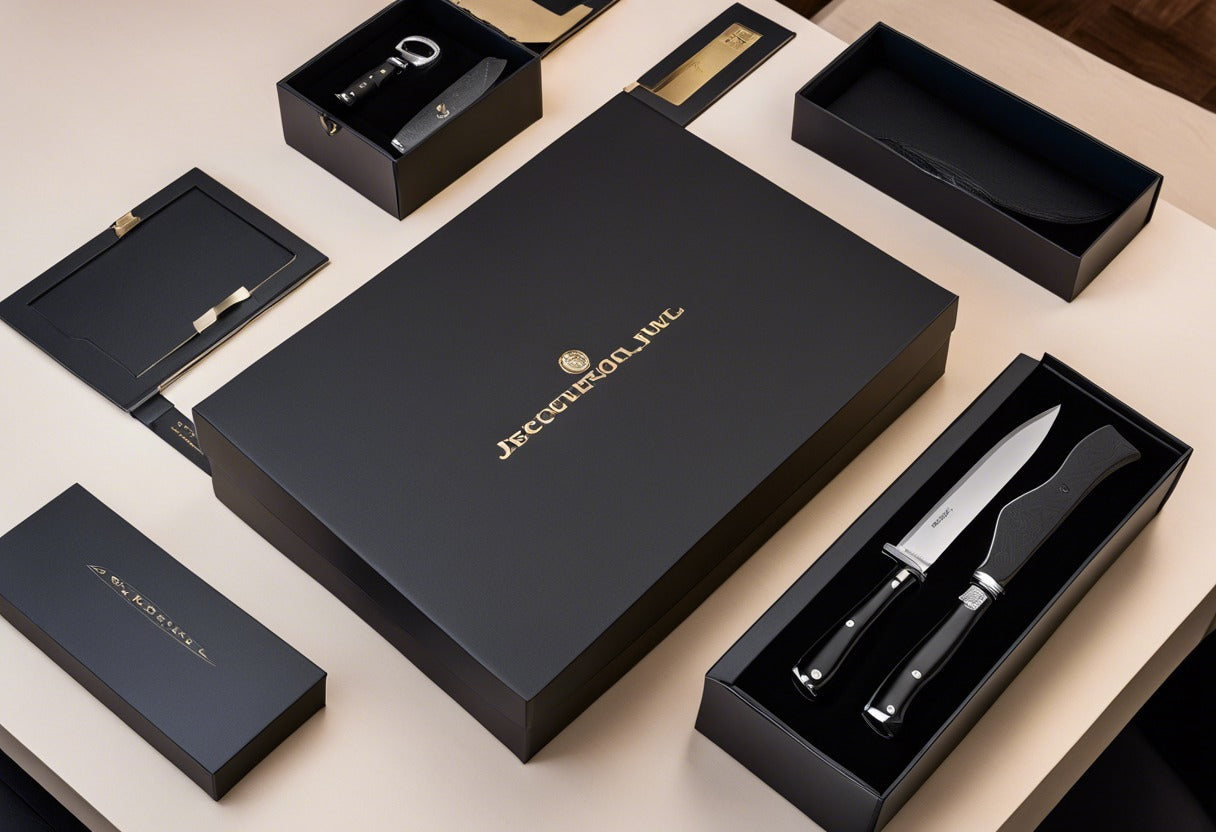
When it comes to gifting designer knives, the unboxing experience plays a crucial role. It is the first point of physical interaction between the recipient and the gift, setting the stage for a memorable moment. As such, presentation and packaging are as important as the craftsmanship of the knife itself.
Designers are fully aware that the initial reveal can elicit feelings of anticipation and excitement. Therefore, they often invest in quality materials and thoughtful design for their packaging. From the outer box to the inner wrapping, each layer is tailored to enhance the elegance of the knife within.
- The outermost box is typically sturdy, offering protection while also exuding an air of sophistication through minimalist branding.
- As one lifts the lid, they may find a certificate of authenticity or a note about the knife’s handmade origins, underscoring the individual care put into each piece.
- Within, the knife usually rests on a custom-formed insert or is nestled within layers of soft, high-quality fabric, designed both to protect the blade and handle and to present them in a visually appealing manner.
- Extras such as care instructions, a brief ‘about us’ story, or a FAQ sheet about the knife’s maintenance show an additional level of thoughtfulness.
For knives that are made to order, the packaging might include personalized touches to reflect the unique nature of the creation, enhancing the bespoke experience. This meticulous attention to detail bridges the gap from classic to contemporary trends in luxury item presentation, elevating the ritual of gifting a designer knife to an art form in itself.
Ethical and Legal Considerations When Gifting Knives

When selecting a modern designer knife as a gift, it is critical to navigate the ethical and legal landscapes associated with such a present. Knives, by their very nature, are tools that require thoughtful consideration before being gifted. It is not only a mark of respect for cultural practices but also adherence to legal statutes that govern the possession and transfer of such items.
-
Research Local Laws: The legal regulations concerning knife ownership can vary significantly from place to place. It may range from restrictions on the type of knife that can be owned to the age of the individual who can legally possess it. Make it a point to understand and comply with the local laws of the recipient’s locale before proceeding.
-
Consider Cultural Sensitivities: In some cultures, giving a knife can symbolize cutting ties or bring bad luck. Always take into account the recipient’s cultural background and beliefs. If necessary, explain the purpose and sentiment behind the gift to avoid any potential misunderstanding.
-
Intent of Use: Ensure that the recipient understands the intended use of the knife, especially if it is a specialty or handmade piece. Designer knives often serve as a symbol of craftsmanship and tradition, from classic to contemporary trends in luxury design aesthetics.
-
Safety Precautions: When giving a knife, prioritize discussing safety. Educate the recipient about proper handling and storage, especially if they are unfamiliar with such items.
-
Age and Maturity: Be responsible in assessing whether the individual receiving the knife has the maturity to handle it safely. This is both an ethical responsibility and a legal necessity.
-
Presentation: To alleviate any potential for misunderstanding, consider how the knife is presented as a gift. Packaging it thoughtfully and including a note about its significance or instructions can often negate any negative connotations.
When you have thoughtfully considered these factors, gifting a modern designer knife from a curated selection that could range from handmade to made-to-order pieces, can truly reflect a high level of personal regard and an appreciation for luxury and aesthetics.
Top Modern Designer Knife Brands to Consider for Gifting
When perusing collections with the intent of selecting a gift that reflects both luxury and practicality, modern designer knives stand out. These cutting-edge implements aren’t just tools but rather handcrafted pieces of art that marry functionality with style. Below, find a list of esteemed designer knife brands that are sure to impress any recipient, from classic to contemporary trends in knife design and aesthetics.
-
Wüsthof: Esteemed for their precision-forged knives, Wüsthof offers a range of kitchen cutlery that is both sleek and durable. Handmade in Solingen, Germany, these knives are favored by culinary professionals and home chefs alike.
-
Shun: This Japanese brand is renowned for its handmade knives that follow the tradition of samurai sword manufacturing. Shun knives are as beautiful to look at as they are to wield, with their distinctive layered steel and sharp edges.
-
Global: Recognizable by their modern design and all-stainless construction, Global knives have won awards for their innovative approach to knife-making. These knives provide a perfect balance and are made to order for those who appreciate contemporary knife craftsmanship.
-
Benchmade: Specializing in both everyday carry and tactical knives, Benchmade offers handcrafted tools designed for precision and reliability. Their custom knife program allows individuals to tailor their gifts to the recipient’s preferences.
-
Spyderco: Known for their unique “Spydie” hole and ergonomic handles, Spyderco knives push the envelope in knife engineering. With options ranging from pocket to kitchen knives, they offer versatility and innovation.
For those looking to present a gift that will be used, appreciated, and treasured, these brands represent the apex of designer knife craftsmanship and sophistication, embodying the spirit of luxury walking cane design in their attention to detail and aesthetic appeal.
Navigating Pricing: Finding a Designer Knife That Suits Your Budget

When embarking on the quest to find a modern designer knife that aligns with your budget, it is crucial to first understand the myriad of factors that contribute to the cost. Designer knives, especially those that are handmade or made to order, can vary significantly in price due to materials, craftsmanship, and brand reputation.
To begin navigating the pricing landscape, start with research. Explore FAQs and “about us” sections on websites dedicated to luxury knives to gain insight into how the knives are crafted, the quality of the materials used, and the attention to detail in their design. This foundational knowledge will help you assess the value of the knives you are considering.
Factor in the following considerations to align your selection with your financial plan:
- Materials: The choice of steel for the blade and the type of material for the handle can greatly affect the cost. Natural materials or premium metals typically push the price upwards.
- Craftsmanship: Handmade knives imbue individuality and uniqueness, justified by a higher price tag. However, the unparalleled quality can be a worthwhile investment for a gift that lasts a lifetime.
- Brand and Reputation: Established brands known for excellence in from classic to contemporary trends in luxury walking cane design and aesthetics may offer designer knives with a legacy of quality, potentially at a premium.
- Purpose: Bear in mind the intended use of the knife. A decorative piece may command a different price than a practical, everyday tool.
- Customization: Made-to-order knives allow for personal touches but also add to the overall expense. Consider if these tailor-made details are essential for your gift.
Remember, a higher price doesn’t always equate to better quality. A thorough comparison of features and prices across different brands and artisans can unveil a designer knife that is both exquisite and within your budgetary constraints. Opt for a balance between cost and quality to ensure the gift is both thoughtful and economically sensible.
Gifting a Designer Knife: The Etiquette of a Sensitive Present

When considering the gift of a designer knife, whether it be handmade or made to order, one should approach the endeavor with a degree of sensitivity and respect for both the gift and its recipient. Knives have a myriad of uses, from classic to contemporary trends in luxury walking cane design and aesthetics to practical kitchen aids, but they also carry certain connotations that should be thoughtfully navigated when gifting.
Evaluate the Recipient’s Interest
- Understand the recipient’s hobbies: Interest in cooking, outdoor activities, or collecting artisanal items is a strong indicator that a designer knife will be appreciated.
- Respect cultural norms: Be aware of any cultural implications or superstitions related to knives as gifts and proceed accordingly.
Presentation and Messaging
- Enclose in thoughtful packaging: Presenting the knife in a manner that emphasizes its artisanal value and craftsmanship will underscore your regard for quality.
- Include a personal note: Clearly convey the positive symbolism attached to the knife, such as it being a tool of creation and skill.
Legal Considerations
- Know the law: Ensure the gifting and possession of the knife adhere to local laws and regulations regarding blade length and type.
Include Instructions
- Provide care guidance: Include manufacturer instructions to emphasize the importance of maintaining the integrity of the knife. A FAQ or ‘about us’ section may be useful here if gifting from a specialized craftsperson or vendor.
Context is Key
- Appropriate settings: Consider the timing and setting of your gift. Special occasions such as a housewarming or retirement may be more suitable.
By adhering to these etiquettes, one demonstrates not only a discerning taste in selecting a premium, artisanal gift but also a deliberate consideration for the symbolism and implications of such a meaningful present.
The Lasting Impact of a Designer Knife Gift: A Statement of Utility and Art
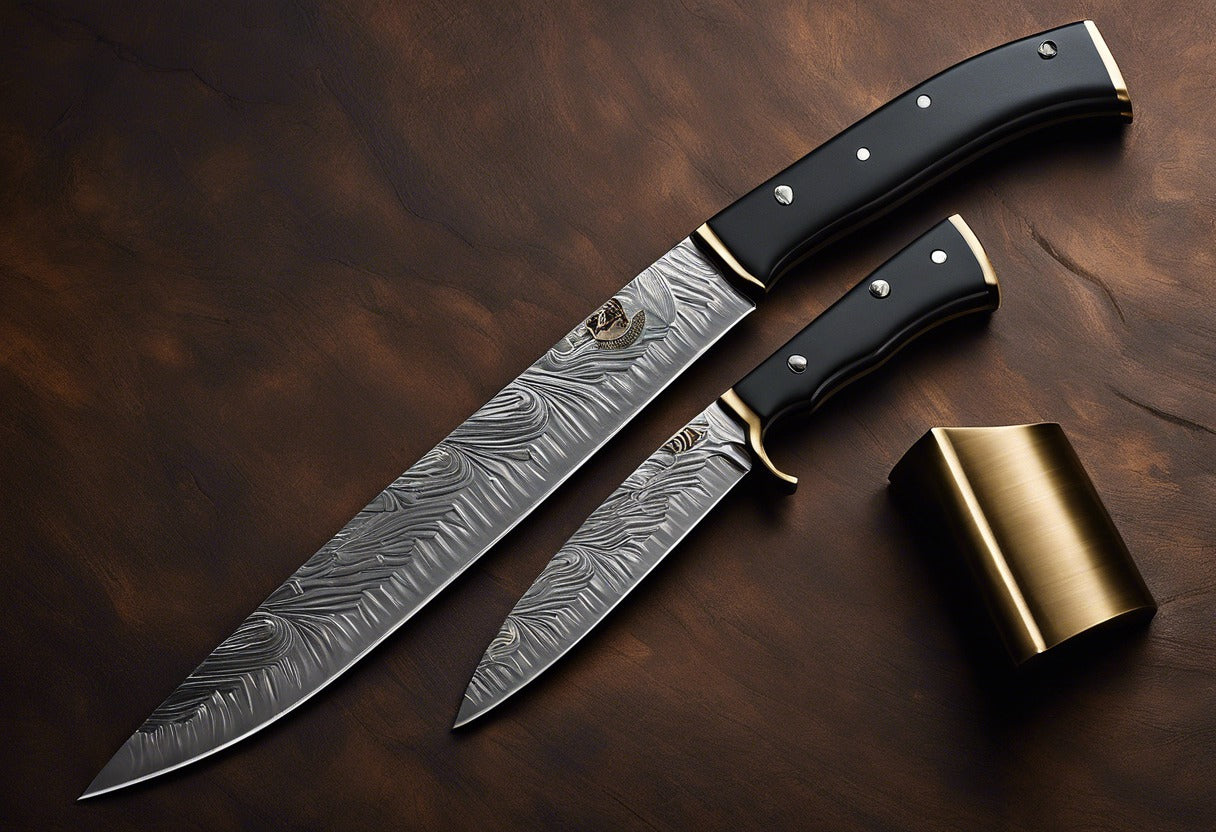
When one considers the ideal gift that balances practicality with aesthetic charm, a designer knife emerges as a quintessential choice. Not only does it serve a functional purpose in the daily task of cutting, but it is also a piece that can be admired for its craftsmanship and design. Gifting a designer knife is more than just offering a useful tool; it’s providing a handcrafted item that reflects personal taste, from classic to contemporary trends in luxury.
A designer knife often is made to order, ensuring that each curve and edge has been meticulously shaped to perfection. This attention to detail is what sets such a piece apart from mass-produced alternatives. Each knife, especially when handmade, tells a story of tradition, skill, and passion. It embodies a history of craftsmanship that can be shared and cherished as a keepsake through generations.
Moreover, a designer knife attests to the giver’s thoughtfulness. It signifies an understanding of the recipient’s appreciation for finer things in life and their predisposition towards items that combine form with function. Such a gift highlights the intersection where utility meets art.
Recipients of designer knives often recognize the weight of the gesture, considering it not just another accessory, but a token of esteem. These knives often find prominent places in homes, displayed proudly or used with respect for their artistic nature and utility. They serve as a constant reminder of the giver and the special moment the gift commemorated.
In the realm of gift-giving, the lasting impact of a designer knife is undeniable. It is a testament to durability, beauty, and meticulous craftsmanship that enriches day-to-day life and transcends basic utility to become a piece worthy of admiration and discussion.

